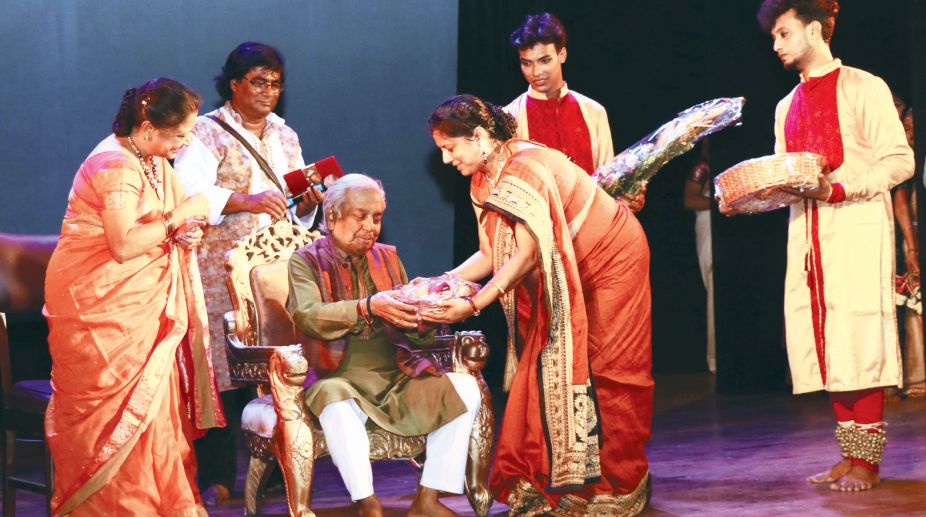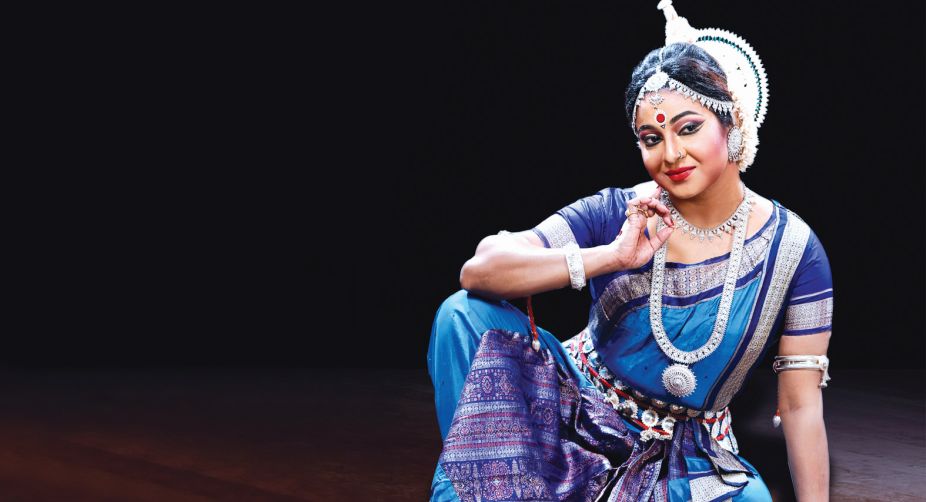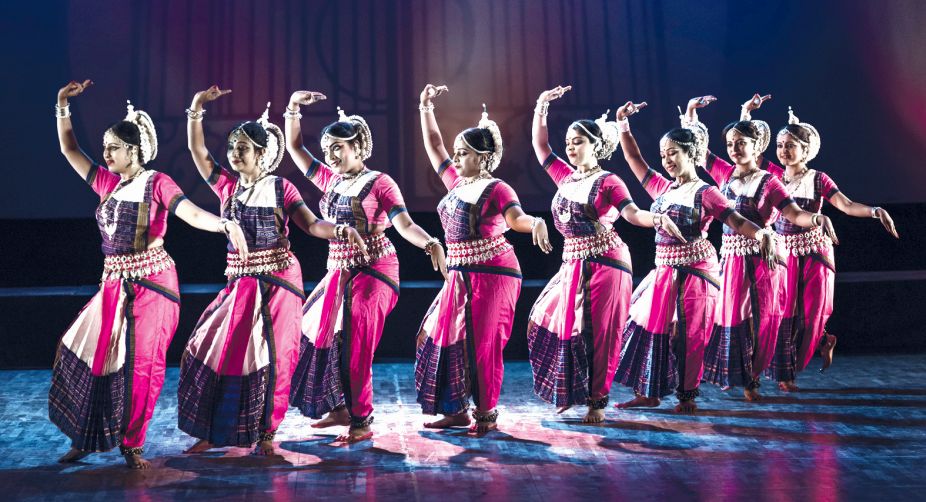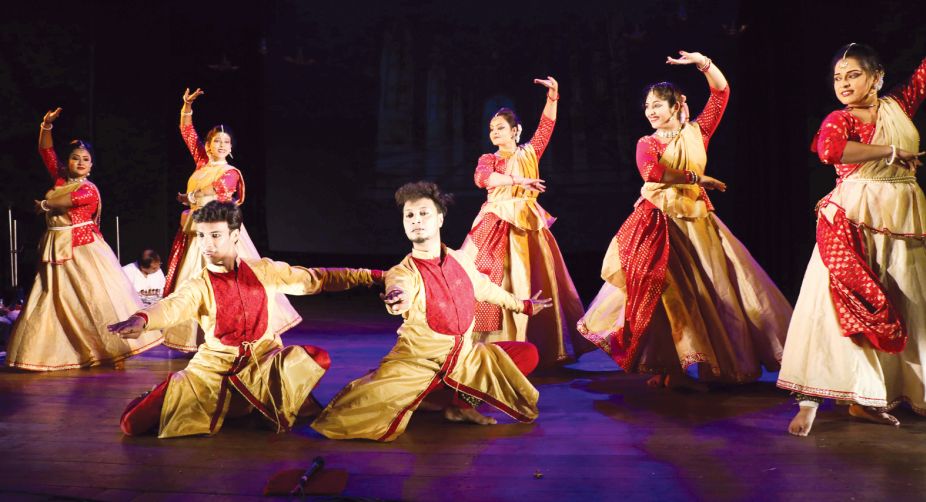Adhering To Tradition
A dance festival organised by Shinjan Nrityalaya focused on gods and goddesses as the central theme.
Classical dance, as passed down by venerated masters, was beautifully showcased at a couple of events.

Felicitation of Pandit Birju Maharaj by Madhumita Roy on his 80th birthday.
Amid great fanfare, disciples of Pandit Birju Maharaj celebrated his 80th birthday. Greatly venerated, Pandit ji has an enviable number of students spread across the globe who are presently vying with each other to observe his auspicious birth year.
Madhumita Roy celebrated the occasion along with the students of her institution, Ghungroo. They presented an evening of dance for connoisseurs and dance lovers at Gyan Manch where she performed a few of the choicest numbers. It was quite a challenge for aspirants to dance before the legend of Kathak, Pandit Birju Maharaj.
In the piece Raag Chhanda, Madhumita’s choreographic work depicted the emotions of the heroine or nayika who is awaiting the arrival of her beloved, expressing her joy and happiness when the moment comes. Based on raga Malkaush and teentaal of sixteen beats, this number displayed their skills in pure dance as well as abhinaya. The performers – Poulami, Nandini, Susmita, Indira, Monalisa, Prasenjit and Manab — rendered the piece well.
Advertisement

Darbari laid bare the picture of courtesans in the Mughal court to the accompaniment of traditional music composed by Pandit ji. On the other hand, Varsha was presented in duet by Shreya Bhattacharya and Asmita Chakraborty. The motifs of the monsoon incorporated into the dance made the piece come alive.
Pandit Birju Maharaj was felicitated by Madhumita Roy — significantly the guru was made to sit centre stage and presented with a murti of Lord Krishna.
***
Artistic director Aloka Kanungo of Shinjan Nrityalaya paid tribute to the legendary Guru Kelucharan Mohapatra who has been instrumental in making her an accomplished Odissi dancer. She also genuflected to Raghunath Dutta, her mentor, and the great vocalist, Girija Devi.

As all good things must start after appeasing the elephant-headed god and students of Shinjan Nrityalaya performed a Ganesh Vandana painstakingly taught by their guru Aloka Kanungo. Students of Sruti Performing Arts danced gracefully on the mythological theme of the 10 incarnations of Vishnu in the style of Manipuri exponent Guru Bipin Singh, taught to them by Sruti Bandopadhayay, mentor and founder of their institution.
The seniors of Shinjan Nrityalaya — Arpita Venkatesh, Sriparna Bose, Sarbani Sen, Nivedita Daw Dutta, Paulomi Chakraborty, Suvra Maity, Urjashee Basak and Swaralipi Roy — performed Mana Samahar, which is basically a cluster of tehais in raga Shankaravaranam and taal ek taali, choreographed by Aloka Kanungo, to a composition of Guru Ramahari Das while the rhythm was composed by Dhaneswar Swain.
Moving on, Atanu Das and troupe performed the Ardhanariswara stotram, Champeya Gourardha, composed by Adi Shankaracharya in Bharatanatyam style. In the hands of better performers it perhaps could have been better.
On the other hand, the students of Guru Durgacharan Ranbir performed Sthayi. In the piece, the repetition of the same mnemonics showing different designs and activities were entertaining and remarkable.
Taking forward late Rani Karnaa’s legacy, Sanjog celebrated an artistic journey, a long term relationship between two dancers, friends, colleagues — Debashree and Sohini — the bond they share with their Guru and their relationship with dance. It was a search, an exploration of the artistic self and the Kathak form. It was a discovery of Kathak infused with depth, richness, elegance, dignity and contemplative beauty unique to Padmashree Rani Karnaa’s sensibility of Kathak.

Sanjog comprised of a series of duets, trios and group compositions based on traditional, innovative and experimental Kathak dance pieces embracing a variety of music genres. The concept and choreography was by Debashree Bhattacharya and Sohini Debnath.
Chatushpadi Chakradharan was thematic and expressional in character. It sought to portray the charms of Krishna, whose grace even the sun and moon cannot equal. Serving as a foil to the love-bedewed chatushpadi, the piece captured, through vigorous dancing, the might of Krishna on the battlefield. As he set out to wield the famed sudarshan chakra, the Earth trembled and heavens spat fire. Vocals were by Sudokshina Manna Chatterjeee and Arup Sarkar.
Darbari Tarana followed in medium and fast tempos with mnemonic syllables in the rhythmic cycle of 16 beats. The Tarana concluded with Hamd O Sana, a Sufi prayer to the Supreme.
A recipient of Central Sangeet Natak Akademi Award, Aloka Kanungo magnanimously included classical dance forms other than Odissi with a view to promote the rich cultural heritage of India.
Advertisement